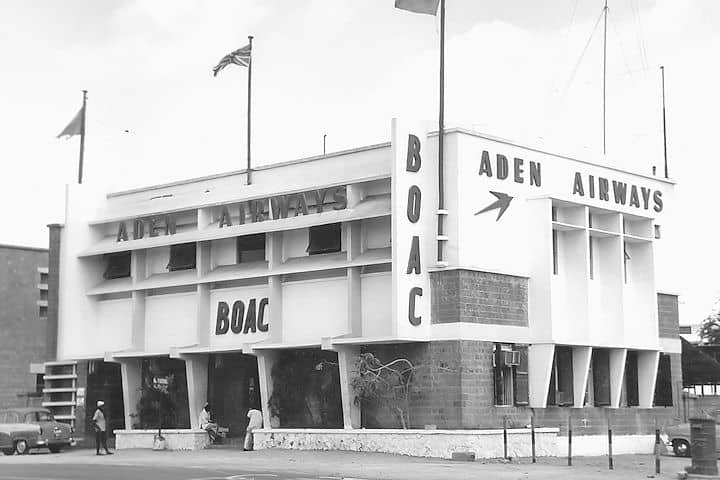‘C’ Squadron of the Queen’s Own Hussars was sent to Aden in February 1960 to carry out desert trials and take part in combined service amphibious exercises in and around the Arabian Gulf.
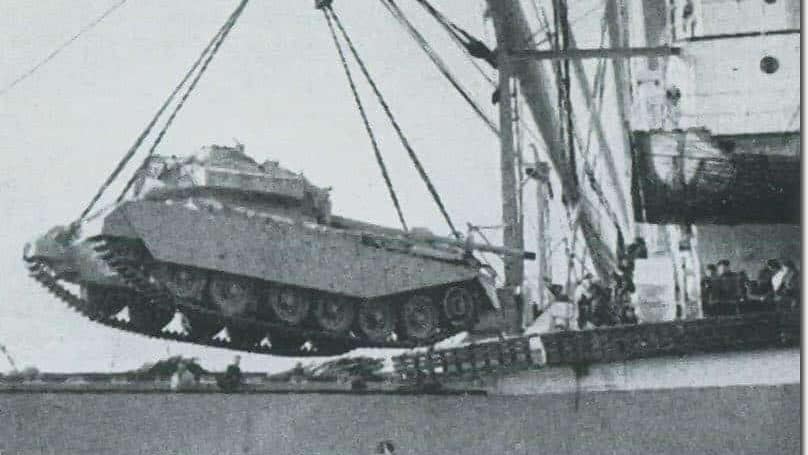
This photo shows one of their Centurion tanks being loaded onto the ship at Southampton.
They were a heavy Armoured Regiment for the first years of the 1960s until 1967 by which time they had been equipped with the Mark XIII Centurion armed with a 105mm gun.
After that, they were converted to an Armoured Reconnaissance Regiment re-rolling onto Saladin and Ferret Armoured cars.
In January 1963, in response to growing nationalist unrest in the region, the British persuaded the sheikhdoms of the Aden Protectorates to merge with the Colony of Aden and from the Federation of South Arabia (FSA). These surrounding territories had always been semi-independent. But the British were able to influence their external relations and establish local garrisons in return for military protection.
The Aden Insurgency 1963 – 1967
Inspired by President Nasser of Egypt, Arab nationalists formed the National Liberation Front (NLF) in Yemen, which itself had designs on Aden and its surrounding territories.
Hostilities Commence
Hostilities started on 14 December 1963, with an NLF grenade attack against British High Commissioner of Aden Sir Kennedy Trevaskis, which took place as he arrived at Khormaksar Airport to catch a London-bound flight. The grenade killed a woman and injured fifty other people. On that day, a state of emergency was declared in Aden.
The Radfan
Trouble then developed in the mountainous Radfan region, where dissident local tribesmen raided the road connecting Aden with the town of Dhala near the Yemen border. In January 1964, three Federation Regular Army (FRA) battalions, with British air support, restored order. But when they withdrew, trouble flared up again, with the rebels receiving NLF support.
On 29 April 1964, the authorities mounted a second expedition, this time with British Army soldiers. Together with two FRA battalions, they advanced rapidly through rugged terrain, capturing the ridges and hills that dominated the tribal areas. By 26 May 1964, they had taken the main rebel stronghold in the Wadi Dhubsan and suppressed the tribal revolt.
The Aden Emergency
In 1964, continuing to reduce its imperial commitments, the British Government announced that independence would be granted to the newly formed FSA by 1968. However, some British forces would stay on in Aden.
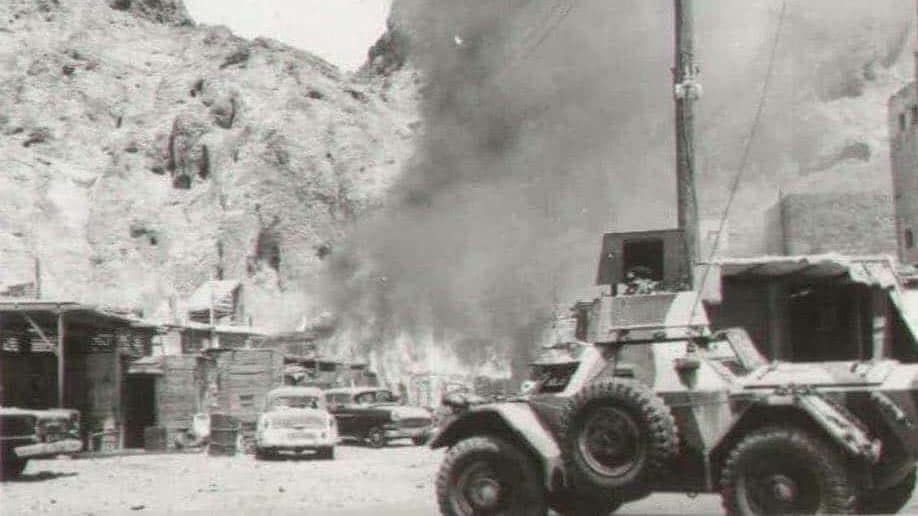
Aden in 1965
The NLF and FLOSY began a campaign against British forces in Aden, relying largely on grenade attacks. One such attack was carried out against RAF Khormaksar during a children’s party, killing a girl and wounding four children.
The guerrilla attacks largely focused on killing off-duty British officers and policemen. Much of the violence was carried out in Crater, the old Arab quarter of Aden. British forces attempted to intercept weapons being smuggled into Crater by the NLF and FLOSY on the Dhala road, but their efforts were met with little success. Despite taking a toll on British forces, the death toll among rebels was far higher, largely due to inter-factional fighting among different rebel groups.
In 1964 the British 24th Infantry Brigade arrived to conduct land operations. It remained in Aden and the Aden Protectorate until November 1967.
By 1965, the RAF station RAF Khormaksar was operating nine squadrons. These included transport units with helicopters and a number of Hawker Hunter fighter bomber aircraft. These were called in by the army for attacks on rebel positions in which they would use 60-pound high explosive rockets and their 30 mm ADEN cannon.
Aden in 1967
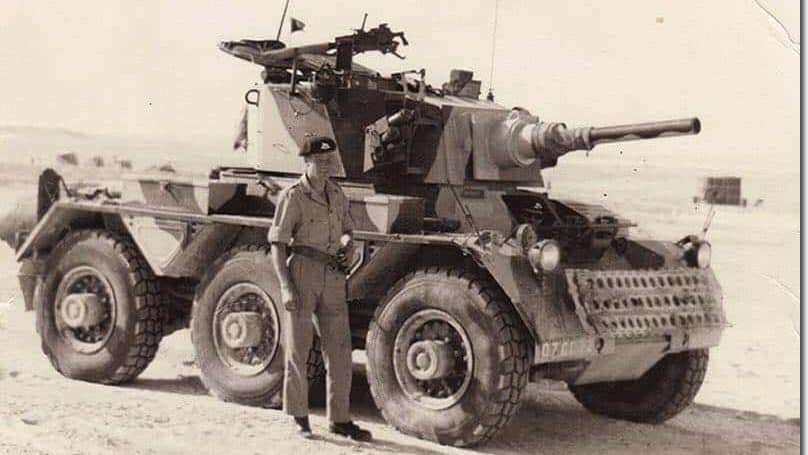
On 19–20 January 1967, the NLF provoked street riots in Aden.
After the Aden police lost control, British High Commissioner Sir Richard Turnbull deployed British troops to crush the riots. When the NLF riots were crushed, pro-FLOSY rioters took to the streets.
Fighting between British forces and pro-guerrilla rioters lasted into February.
British forces had opened fire 40 times, and during that period there were 60 grenade and shooting attacks against British forces, including the destruction of an Aden Airways Douglas DC-3, which was bombed in mid-air, killing all the people on board.
Arab Police Mutiny
The emergency was further exacerbated by the Six-Day War in June 1967. Nasser claimed that the British had helped Israel in the war, and this led to a mutiny by hundreds of soldiers in the South Arabian Federation Army on 20 June, which also spread to the Aden Armed Police. The mutineers killed 22 British soldiers and shot down a helicopter, so Crater was occupied by rebel forces.
Concerns were heightened regarding the ability to give sufficient security to British families in the midst of the increased violence, resulting in evacuation plans for families being sped up considerably.
Battle of Crater
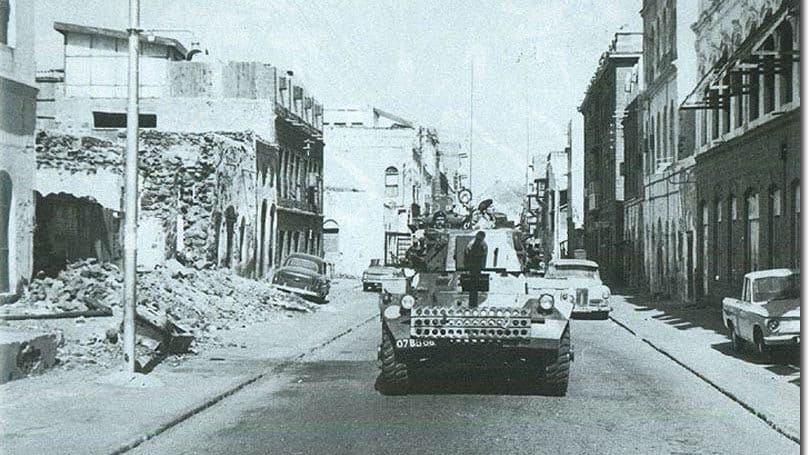
Following the mutiny, all British forces were withdrawn from Crater, while Royal Marines of 45 Commando took up sniping positions on the high ground and killed 10 armed Arab fighters.
However, Crater remained occupied by an estimated 400 Arab fighters.
NLF and FLOSY fighters then took to the streets and engaged in gun battles, while arson, looting, and murder were also common.
British forces blocked off the two main entrances to Crater.
They came under sniper fire from an Ottoman fort on Sira island, but the snipers were silenced by a shell from an armoured car.
Order was restored in July 1967, when the 1st Argyll and Sutherland Highlanders entered Crater under the command of Lt. Col. Colin Campbell Mitchell and managed to occupy the entire district overnight with no casualties.
The Withdrawal
Nevertheless, repeated guerrilla attacks by the NLF soon resumed against British forces, causing the British to leave Aden by the end of November 1967, earlier than had been planned by British Prime Minister Harold Wilson and without an agreement on the succeeding governance.
Following the British departure, the NLF managed to seize power and established the People’s Republic of South Yemen.

